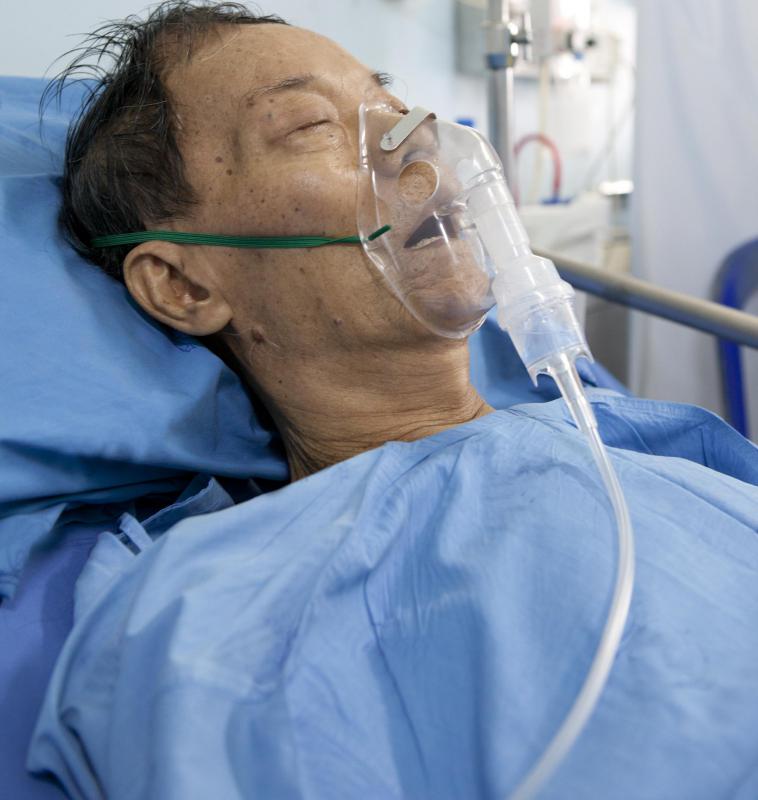At TheHealthBoard, we're committed to delivering accurate, trustworthy information. Our expert-authored content is rigorously fact-checked and sourced from credible authorities. Discover how we uphold the highest standards in providing you with reliable knowledge.
What are the Different Types of Respiratory Disease?
There are many types of respiratory disease. They are often classified as obstructive or restrictive lung diseases and respiratory tract infections. Some of these diseases are serious, requiring regular treatment. Some of them may even cause death. Others, such as the common cold, are considered minor illnesses that come and go rather quickly and do not cause serious problems.
An obstructive respiratory disease is marked by the obstruction of a person’s airways. A common type of obstructive respiratory disease is asthma, which is the inflammation and temporary narrowing of a person’s airways that makes it difficult for him to breathe. Another condition that causes obstructed airways is chronic obstructive pulmonary disease (COPD), which is marked by narrowed airways that cause a person’s airflow to be limited. Over time, the condition gets worse. Both asthma and COPD can be deadly.

A restrictive respiratory disease stops the lungs from expanding as they should, decreasing air capacity and making it harder to breathe. Among these diseases are asbestosis and pulmonary fibrosis. Asbestosis is caused by inhaling asbestos, which causes scarring of the inner lung tissue. The result is chest pain, coughing, trouble breathing that gradually worsens, and chest tightness. Some people with this disease develop secondary conditions that prove fatal.

Pulmonary fibrosis is also marked by scarring of the lung tissue, which progresses over time. The damage to the lungs may be caused by a number of things, such as other medical conditions, radiation, and toxins in the environment. It’s symptoms include shortness of breath, dry cough, weight loss, muscle and joint aches, and fatigue. For some people, this condition becomes severe very quickly while others may experience a worsening of symptoms over years. People with this condition have an average life expectancy of two to five years.

Most people are familiar with respiratory infections, which are caused by bacteria and viruses. The most common respiratory infection is the common cold, which is caused by a wide range of viruses. The common cold is marked by such symptoms as sore throat, sneezing, cough, and a runny or stuffy nose. Colds may be accompanied by fever, though this is not as common as the other symptoms. When it does occur, it is usually only a low-grade fever.

Pneumonia is another type of respiratory tract infection that may be caused by bacteria, viruses, and fungi. This infection can affect one or both of a person’s lungs and is marked by a moderate-to-high fever, chills, and a cough that often produces mucous. Some people experience shortness of breath and chest pain with this illness. While many people recover from pneumonia, it can be deadly.
AS FEATURED ON:
AS FEATURED ON:



















Discussion Comments
Lingering respiratory problems should always be checked out by a physician. As the article points out, they can be deadly.
By the way, asthma is one of the most under-treated conditions in the nation. Just ask any doctor and he or she will tell you just that. That is unfortunate as the condition can be controlled will with an inexpensive prescription and an asthma attack that hits without warning can really mess up your day.
Post your comments